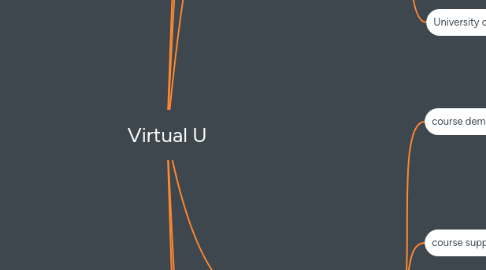
1. Facilities model
1.1. Funds
1.1.1. Facilities reserve
1.1.1.1. Budget
1.1.1.2. Donations
1.1.2. Funding mix
1.1.2.1. Internal
1.1.2.2. External
1.1.2.2.1. Assets
1.1.2.2.2. Liabilities
1.2. Space need
1.2.1. Decision factors
1.2.1.1. Total operating expense
1.2.1.1.1. Department size
1.2.1.1.2. New space is built if funds are available
1.2.1.2. Performance & morale
1.2.1.2.1. Faculty
1.2.1.2.2. Student
1.3. Deferred Maintenance
1.3.1. O&M
1.3.2. Space in use
2. Student Life model
2.1. Life satisfaction
2.1.1. Extracurricular talent
2.1.2. Student life
2.2. Athletics satisfaction
2.2.1. Athletics talent
2.2.2. Athletics record
2.2.2.1. Prestige sports
3. Research model
3.1. Professors quality drivers
3.1.1. research talent
3.1.2. research performance
3.1.3. department academic standing
3.1.4. institutional prestige
3.2. Research proposals
3.2.1. fields
3.2.2. quality drivers
3.2.3. research time
3.2.4. doctoral student quality
3.2.5. current projects
3.3. Research projects
3.3.1. fields
3.3.2. quality drivers
3.4. Research awards
3.4.1. quality drivers
3.4.2. individual cost rate
3.5. University overhead recovery
3.5.1. Individual cost rate
3.5.2. total research volume
4. Teaching model
4.1. course demand: student signups
4.1.1. requirements by field
4.1.2. prerequisites
4.1.3. target cohort of course
4.2. course supply: faculty assignments
4.2.1. course type mix
4.2.2. normal class size
4.2.3. normal teaching load
4.2.4. "stretch" factors
4.3. Supply & Demand match up
4.3.1. students admitted to course when space is available
4.3.2. new sections opened when faculty are available to teach, otherwise course is closed
4.4. Educational quality
4.4.1. faculty performance
4.4.2. educational development time
4.4.3. IT
4.4.4. class size
5. Faculty model
5.1. Performance indicators
5.1.1. teaching performance
5.1.1.1. talents
5.1.1.2. time distribution
5.1.1.3. academic support
5.1.2. scholarship performance
5.1.2.1. above average
5.1.2.2. different weights
5.1.3. research performance
5.1.3.1. above average
5.1.3.2. direct research sponsor
5.2. Quantitative measures
5.2.1. Salaries
5.2.2. Satisfaction
5.2.3. Qualifications
5.3. Faculty hiring
5.3.1. Institutional priorities
5.3.1.1. New blood (assistant professors)
5.3.1.2. Leadership (full professors)
5.3.1.3. Cost containment (low salary)
5.3.1.4. Adjunct
5.3.1.5. Talent profile
5.3.2. Resource allocation
5.3.2.1. Number of hires
5.3.2.2. Departmental priorities
